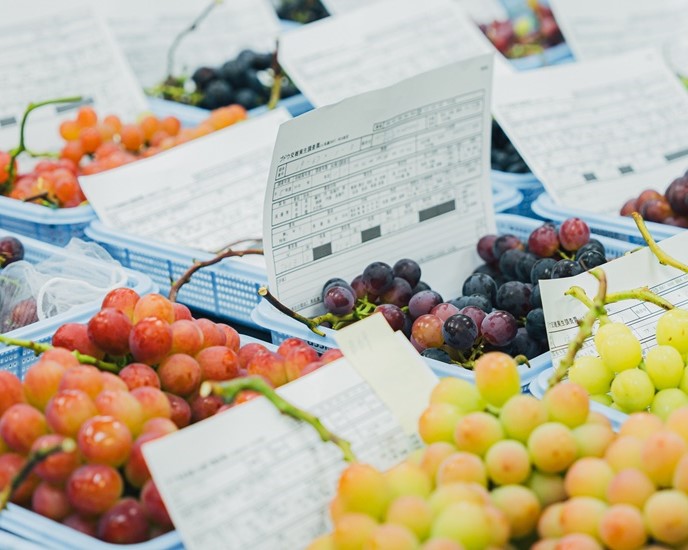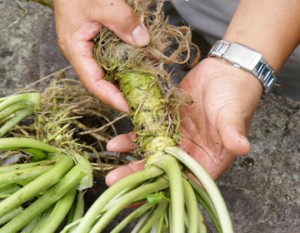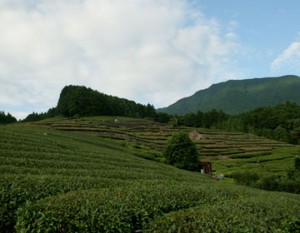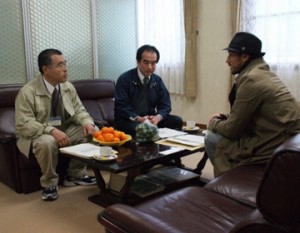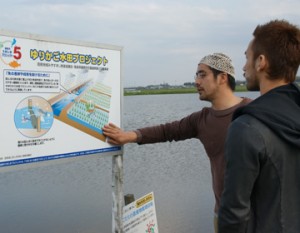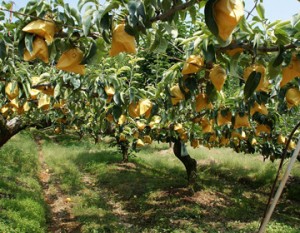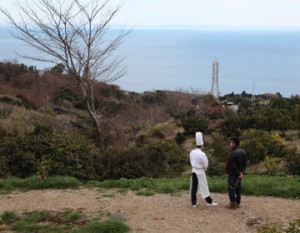High-quality Japanese fruits are attracting worldwide attention. Domestic fruits with excellent taste, high productivity and transportability are in increasing demand overseas, and the Japanese fruit export market is expected to continue to grow. Yamanashi Prefecture is known as a major producer of such Japanese fruits. What kind of research is being conducted at the Yamanashi Fruit Tree Experiment Station, which has supported the development of fruit tree cultivation? What are their efforts and promising new varieties?
Fruit cultivation in Yamanashi Prefecture since the Edo period
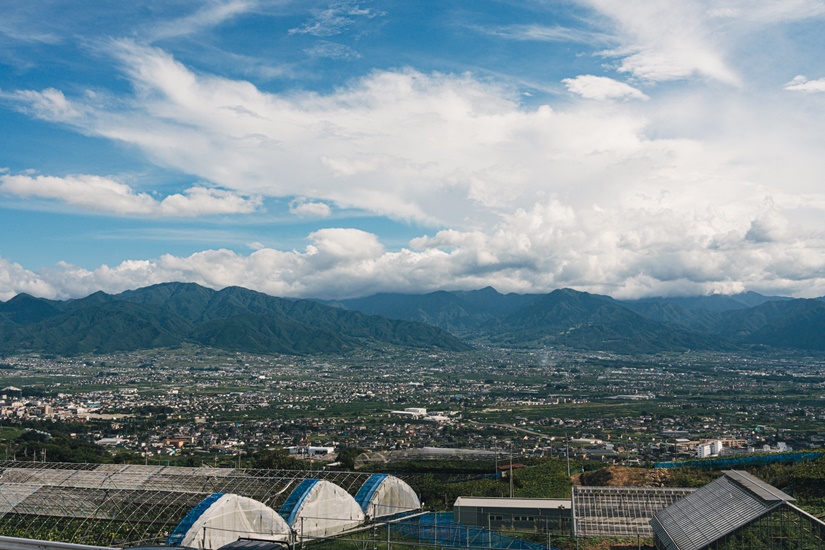
Japanese fruits are highly valued overseas. The export value of Japanese fruits is on the rise, with apples, grapes, strawberries, peaches, melons, and citrus fruits exported last year up about 15-30% over the previous year, pears up 40.1%, and oysters up 50%. Fruit tree experiment stations located throughout the country have supported Japan’s fruit tree cultivation. Eleven institutes, operated by prefectures where fruit tree cultivation is flourishing, such as Aomori, Fukushima, Nagano, Ehime, and Kumamoto prefectures, are working to develop varieties suited to the natural environment and climate of the region and to research and disseminate cultivation techniques.
In 1938, the Yamanashi Fruit Tree Experiment Station was established to promote and develop fruit tree cultivation in Yamanashi Prefecture, a practice that has continued since the Edo period. Located on a hill in Yamanashi City overlooking the Kofu Basin, the area is covered with pink peach blossoms in the spring, and the scenery is truly worthy of being called “Peach Garden.
The Kai Souki, a book written in the Edo period (1603-1867), mentions that eight fruits called “Koshu Hatchinka” (eight delicacies of Koshu), including peaches, grapes, pears, chestnuts, oysters, apples, pomegranates, ginnan, and walnuts were presented to Edo via the Koshu Highway, indicating that Yamanashi Prefecture had been producing high quality fruits since that time. It seems that the history of fruit cultivation had already begun in Kofu. There was already a kind of tourist vineyard in Kofu, which became famous as a “sightseeing vineyard” in the Meiji era. After the Meiji period, with the decline of sericulture due to the prosperity of the silk industry, mulberry fields were switched one after another to fruit orchards, and full-scale fruit tree cultivation began in Yamanashi.
Engaged in research and breeding specializing in four tree species
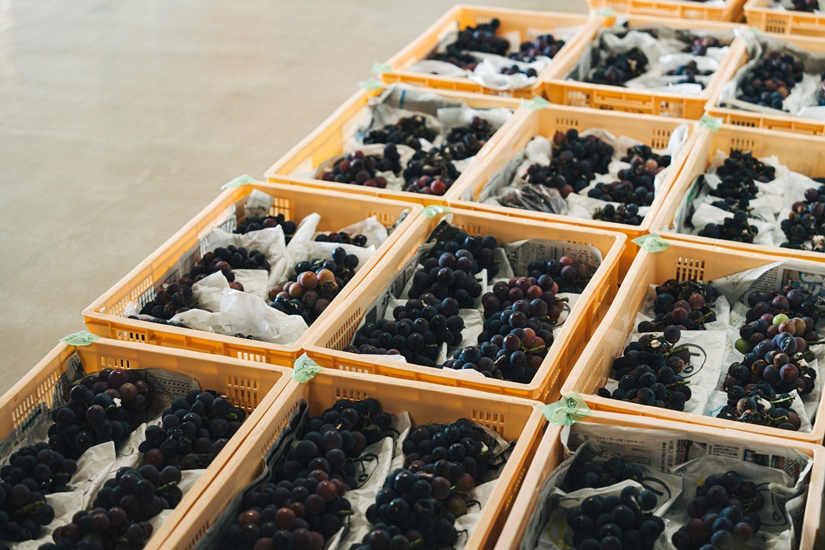
Fruit trees are classified into two categories: evergreen fruit trees, including citrus trees such as tangerines, lemons, and yuzu, and deciduous fruit trees such as grapes, oysters, apples, kiwis, and pears. At the Yamanashi Fruit Tree Experiment Station, research and breeding is being conducted specifically on four deciduous fruit trees: peaches, grapes, plums, and cherries.
Deciduous fruit trees, which do not flower unless exposed to low temperatures, can be stably cultivated when exposed to low temperatures in winter. For this reason, Yamanashi Prefecture, with its large seasonal temperature differences and annual precipitation of only about 1,000 ml, has been considered an ideal location for open-air cultivation of deciduous fruit trees. Today, Yamanashi is Japan’s largest producer of grapes, peaches, and plums, and the third largest producer of cherries. Minami-Alps City in Yamanashi Prefecture is considered the southern limit for the production of cherries, which do not grow under high temperatures.
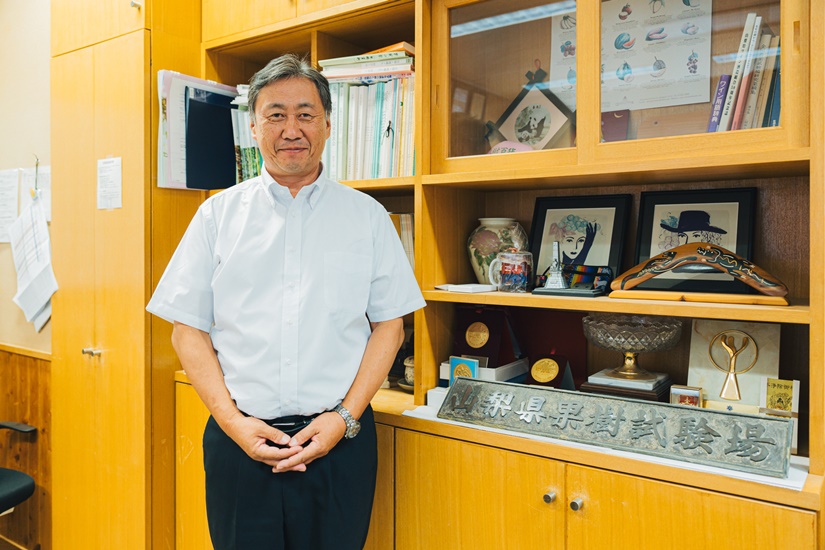
Director Kazushi Kobayashi says, “Since the test center is located in a large production area, the largest in Japan in terms of both cultivation area and production, there are high expectations from the people around us, and we are required to provide high-level varieties and technologies. The staff not only conducts research in the laboratory, but also manages 17 hectares of fields, so they go out into the field and cultivate fruit trees to find areas for improvement and issues. We can’t find solutions to problems unless we actually cultivate at the same level as the farmers in Yamanashi,” he says. It is essential to conduct research after acquiring solid cultivation techniques when developing new cultivation techniques and new varieties,” he says. It is rare in Japan for an experimental station to have a dedicated breeding department and to focus on variety development.
Gibberellin treatment, an important process in grape cultivation that is now widely used throughout Japan, was successfully applied to Delaware grapes in 1959 to make them seedless, and it was the Yamanashi Fruit Tree Experiment Station that established the gibberellin treatment technique in 1960. By dipping bunches of grapes in a chemical solution of the plant hormone gibberellin two to three weeks before full bloom, and again two weeks after bloom, they demonstrated seedlessness and accelerated fruit enlargement.
In 1976, the company discovered that the “aji-nofruit” disease, which causes poor coloring and reduced sugar content in the grape “Koshu”, was caused by a virus, and later discovered the same cause in the symptoms of “Kyoho”, “Pione”, and “Kaiji”. By establishing virus-free technology for seedlings, the company has contributed to the improvement of grape quality.
Continuing to take on the challenge of breeding, which takes many years
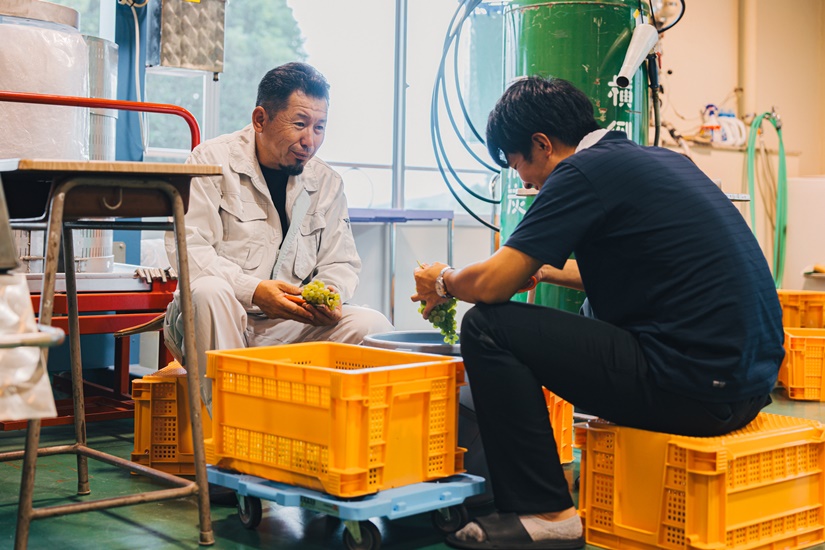
The process of fruit tree breeding takes many years. It takes three years from crossbreeding to fruit bearing, grafting, and several rounds of selection until a superior variety is found, which takes 10 to 15 years. In the case of vinification grapes, the process of trial vinification is included after the breeding of selected varieties, so it takes even longer, and wine varieties are produced over a period of 20 years. There is no guarantee, however, that a promising variety will eventually be found, and the steady work must be repeated.
New wine grape variety born in Japan
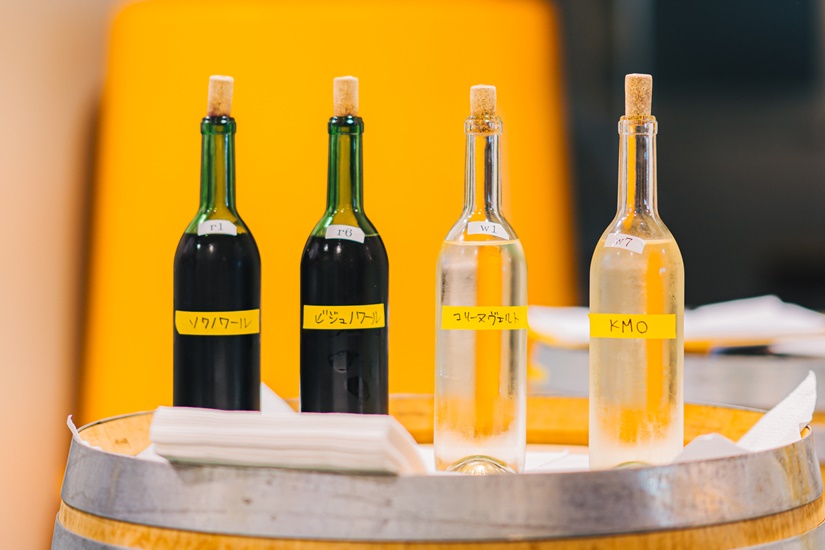
The Yamanashi Prefectural Fruit Tree Experiment Station has been involved in the development of grape varieties for brewing since 1950, and is the only other experiment station in Japan that is engaged in full-scale development of grape varieties for brewing. Director Kobayashi has been with the institute since 1992 and has been involved in grape cultivation and breeding for many years.
After years of research in search of “vinification varieties that can be grown stably in Japan,” he has created original varieties such as “Monde Briere” (registered in 2016) and “Colline Vert” (registered in 2019) for white wine, and “Armonoire” (registered in 2009) and “Soin Noir” (application to be published in October, 2022) for red wine. Original varieties were created. Many wineries have commercialized “Bijou Noir” (registered in 2008). There are traditional varieties such as Chardonnay, Cabernet, and Merlot, and it is very difficult to create a grape variety of the same level, if not surpassing them,” says Director Kobayashi. Named for its smooth and silky taste, this new variety ripens early, in late August, and has more than twice the anthocyanin content of Merlot, resulting in better coloring and a darker wine. Its mild, well-balanced wines with moderate astringency are highly acclaimed by experts.
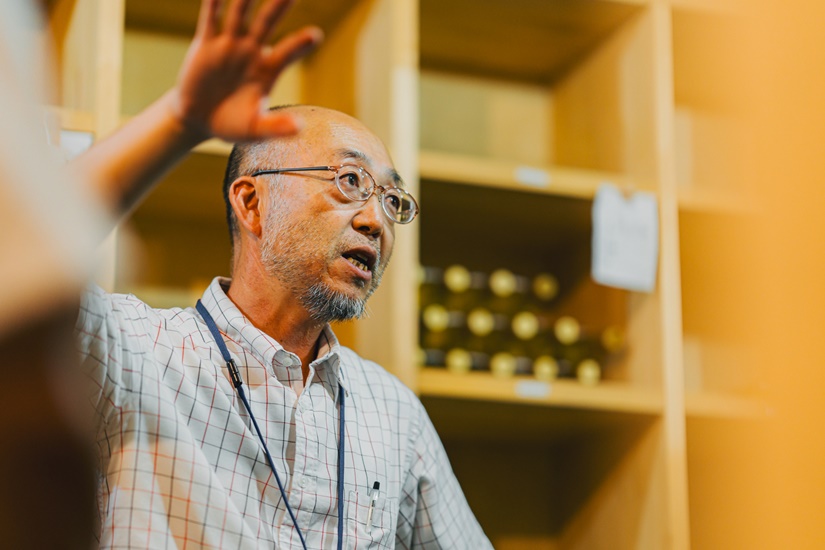
Katsuhiro Shintani, who is also in charge of the test brewing, says, “With the promotion of organic and sustainable farming practices in recent years, varieties that are resistant to disease and climate change while maintaining high quality are required. We are aiming to develop varieties that are adapted to Japan’s soil and climate, that respect the climate, and that can further reduce the use of pesticides as much as possible.
In Europe, there is a wide variety of varieties and a culture born from a long history. Many of the varieties we have developed so far are based on European varieties, but I hope that the varieties we are developing now will become native varieties in Japan 100 to 200 years from now. I hope that in the future, Japan will be a wine-producing region with a variety of varieties.” With this hope in mind, he devotes himself to daily research in order to develop high-quality varieties that are as good as European varieties and to increase the variety of varieties that are suited to the climate of Japan.。
Breeding the next generation of varieties that can withstand extreme weather conditions.
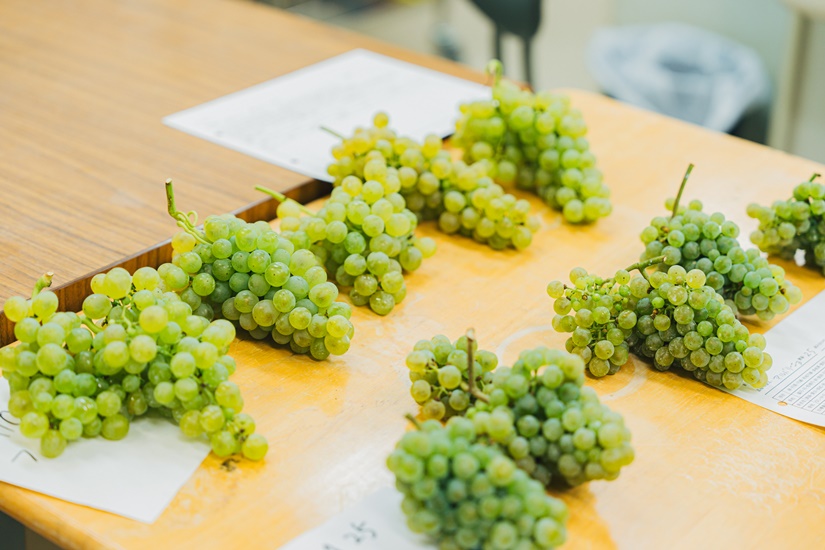
Kyoho grapes and Pione grapes, which are representative of black grapes, do not color well at high temperatures. The optimum temperature for the enzyme that synthesizes anthocyanin, a black pigment, is 25 degrees Celsius or lower, and if the temperature does not fall below 25 degrees Celsius on consecutive days with tropical nights, coloration will deteriorate. If the temperature does not fall below 25 degrees Celsius on a tropical night, the coloring will deteriorate. We have no choice but to solve this problem through varieties.” They are selecting next-generation varieties that can easily withstand the high temperatures of the Yamanashi summer, and are focusing on developing varieties that can cope with global warming and abnormal weather conditions.
Although the development of genetic analysis technology has made it possible to develop varieties more efficiently, it still takes time and effort to breed fruit trees. Kobayashi says, “Needs change with the times, but breeding takes more than 10 years, so we have to respond to a wide range of needs while aiming for high quality and labor savings.
Even so, the underlying principle of “developing varieties that combine improved eating quality and high productivity” remains constant. If the cultivability of fruit trees is poor, production will not increase and varieties will not spread. If it does not spread, the fruit will not become a brand. A variety like the “Shine Muscat” that combines excellent taste with high productivity can become a brand. Sunshine Red,” developed by the Yamanashi Prefectural Fruit Experiment Station and debuted this year, is a red variety with the aroma and taste characteristic of Muscat. Director Kobayashi agrees, saying, “It is a new variety that requires attention to coloration during cultivation, but its excellent taste and vivid colors are appealing.
Kobayashi, who has been involved in grape research for many years, says, “I have just been doing my best to solve the problems in front of me one by one. I have gained experience by responding to requests from the field, rather than working on what I want to research. He has been able to quickly identify the causes of problems at production sites, solve them, and provide information. We want to be a fruit tree research center that can immediately respond to farmers’ expectations and requests,” he said, revealing the pride of a fruit tree research center that bears the responsibility of a major production area in Yamanashi, the fruit kingdom.
In recent years, “under-blooming” has been a frequent symptom in the cultivation of “Cheinmuscat”. In the course of continued cultivation, diseases and disorders that did not appear during the development of the variety may appear, so we must take action to resolve them as soon as possible. Director Kobayashi says, “We will continue to keep a constant eye on the field, studying countermeasures against abnormal weather and developing technologies that will help farmers make a profit.”
The “Fruit Kingdom of Yamanashi” is the result of the efforts and research of the staff at the Yamanashi Fruit Tree Experiment Station. In order to protect and support Japan’s leading fruit growing region, the staff members continue their research while standing in the field and facing the fruit every day. They hope that the grapes in front of their eyes now will become an indigenous variety that will be loved in Japan 100 or 200 years from now.



